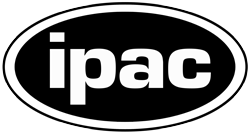When will Euclid be launched?
Euclid was launched on July1, 2023.
Will Euclid data be public?
Yes. Click here for the public data release timeline. Euclid data will be released by the ESAC (the European Space Astronomy Center), and by the complementary archive at IRSA.
How does Euclid compare with the Nancy Grace Roman Space Telescope?
Euclid has a telescope aperture of 1.2m vs. 2.4m for Roman (launch date ~2027). For weak lensing, Euclid uses galaxy images in the visible, Roman uses those in the near-infrared. For galaxy clustering, Euclid uses Hα emission line galaxies with redshifts from 0.9 to 1.8, Roman uses Hα and [OIII] emission line galaxies with redshifts from 1 to 3 ([OIII] emission lines are significantly fainter than those of Hα). Euclid Wide Survey will cover ~15,000 square degrees. The Roman High Latitude Wide Spectroscopic Survey will likely cover a smaller area to greater depth. Euclid and Roman will complement each other. The combination of data from both missions will be uniquely powerful in illuminating the nature of the dark Universe. Click here for more about how Euclid and Roman will work together to investigate dark energy.
What is the relationship between the Euclid Consortium and ESA or NASA?
Euclid is a space mission led by the European Space Agency (ESA), with significant participation from NASA.
The Euclid Consortium (EC) was selected by ESA in June 2012 as the single official scientific consortium having the responsibility of the scientific instruments, the production of the data, and of leading the scientific exploitation of the mission until completion. The US is a member country of the EC. The total number of EC members in the US is 147 as of August 9, 2024.
NASA contribution to Euclid is three-fold:
(1) NASA provided the 16 near infrared detectors and associated electronics for the NISP instrument.
(2) NASA participates in the Euclid Science Ground Segment (the processing of the Euclid photometric and spectroscopic data) via the Euclid NASA Science Center at IPAC (ENSCI).
(3) NASA provides funding to US scientists for Euclid science. NASA selected three Euclid science teams through competition in 2012, and issued the first call for proposals for Euclid General Investigator Program in 2024.
- For the frequently asked technical questions, click here
- For the frequently asked question about Q1 data, here
